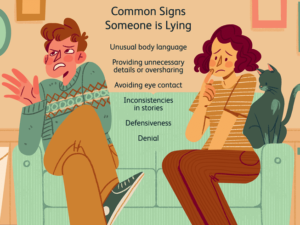
How did we even get here?
“I’m so tired of this, my client said. “It’s happening everyday. I can’t take it anymore.” I nodded. This was a common statement. What was she talking about? The fights. She and her husband fought often, over seemingly stupid and unnecessary things. Trivial things. Things so stupid and unimportant, they often forgot what they were about to begin with. “Why is this happening,” she asked.
“Well, tell me how it typically starts,” I answered. Her reply was the same as I often get from people. It begins with an escalation, a rise in agitation that the couple doesn’t even realize exists. By the time they understand what’s happening, it’s a full-blown fight and they’ve passed the point of no return.
Has This Ever Happened to You?
If you’re anything like my clients, you have often found yourself at the sharp end of someone’s tongue, wondering ‘how the hell did we get here?’ It typically begins something like this:
You ask your spouse for something (we’ll say a diet coke). For whatever reason (don’t speculate here) they don’t get it for you. You get annoyed (that’s a choice). You complain loudly that they never get you diet cokes. They respond with the same tone and volume as you. This bothers you (again, another choice) and you frown, roll your eyes, stomp into the kitchen, get the diet coke yourself, slam the refrigerator door, and storm back into the living room. They walk in and bluntly (another choice) say “what’s your problem?” You get offended by that statement (yet another choice) and respond with sarcasm or rudeness. They tell you to stop being such a ________ (insert expletive here) and it just spins out into the ether, anger and misunderstanding oozing out of both of you, until finally, you’re in separate rooms, rage-posting on social media about why your spouse is the devil.
All over a diet coke. Or a regular coke. Or misplaced keys. Or a bad day at work. Or a poor exchange with your in-laws. Or, or, or… You get the idea.
We never fight about real issues. We fight about stuff. The escalation is completely preventable but we’re so busy focusing on the stupid little stuff, we let the whole thing blow up unnecessarily.
Stop This Train! I Want To Get Off!
Here’s my formula for deescalation. It’s a whopper but effective. It’s ECT 2: Deescalation. It seems like a lot but once you master it, you’ll do it without consciously thinking, I promise. I’ll give you the list, then break it down. Ready? Go.
- Slow down breathing (Non-Verbal Action)
- Maintain open body language (Non-Verbal Action)
- Make deep eye contact (Non-Verbal Action)
- Listen quietly (Non-Verbal Action)
- Nod, non-verbal agreement actions (Non-Verbal Action)
- Short responses “I see, I hear you. Yes, I get it.” (Doesn’t matter if you actually do or not)
- Let the person get it all out without interruption (Non-Verbal Action)
- Ask, calmly, if they are finished.
- If they say no, say “Ok, let me know when you’re done.”
- If they say yes, say “Ok, would you like me to just listen or would you like me to respond?”
ECT 2: Break It Down
- Slow down breathing (Non-Verbal Action)
- Through the nose, breathe in for 4 / out for 8 (or whatever pace works for you).
- When we exhale longer than we inhale, we tell our bodies that we are safe. It may seem counterintuitive while someone else is raging at you, but I promise, you both need this deep breathing to keep level heads.
- Through the nose, breathe in for 4 / out for 8 (or whatever pace works for you).
- Maintain open body language (Non-Verbal Action)
- Arms at sides, hands in pockets, hands on table, or hands held together at stomach level are all non-confrontational body language.
- If standing, keep feet open / apart, arms at side, hands in pockets, or hands together in front. Shoulders open and facing forward.
- If sitting, feet on floor and open or cross legs, hands in lap or at sides. Shoulders open and facing forward.
- Head facing forward, level to ground, not looking down or up.
- Eyes forward, not scanning the room or eye-rolling. Avoid furrowing your eyebrows. Check your frown, dude.
- Relax mouth, avoid biting lips, pursing lips, sneering, giving ‘the eyebrow’. That’s not helping.
- Arms at sides, hands in pockets, hands on table, or hands held together at stomach level are all non-confrontational body language.
- Make deep eye contact (Non-Verbal Action)
- This is a hard ask*, I know. But it really makes a tremendous difference. Look at their eyes (if you can), remind yourself you are talking to someone you love, someone who is genuinely (if only in their own mind) upset about something important and they need you to hear them. Pour all the love you have out of your eyes to them.
- Listen quietly (Non-Verbal Action)
- This is a literal instruction. Listen without interrupting. Nod from time to time. Remember to blink (not rapid blinking, that’s too much). Some people, as a habit, will interject people with passing phrases like “yeah, yeah” or “of course, of course”, often talking over the other person. It’s not meant to be annoying but it can come across that way. Be mindful of it and just listen.
- Nod, non-verbal agreement actions (Non-Verbal Action)
- Nodding, head tilting in the same direction as them, mirroring their body language, hand gestures, slow eye-close when they comment about how hard something is for them, raised eyebrows at a peak in the story, frown when they frown, open mouth in surprise when they are surprised, etc. You will need to practice these in front a mirror.
- (Verbal Action) Short responses “I see, I hear you. Yes, I get it.” (Doesn’t matter if you actually do or not)
- Keep these responses very brief. Use them like salt and pepper in a good meal – sparingly. Say them only after the person has taken a breath. Use them quietly with sincerity. Ensure you’re looking at their face when you say them. “I see, I hear you, I get it, wow that sounds hard, ugh I’m sorry, huh that’s a lot, wow, yeah”. These are all neutral phrases that will allow you to show you’re listening and not actually derail their train of thought/ train of feelings.
- Let the person get it all out without interruption (Non-Verbal Action)
- This should be self-explanatory but it’s not. Let. Them. Vent. People need to get it out of their systems. Know (and say to yourself before and during the exchange) this isn’t about you. This is about something else, something deeper. Let them get it all out. Then sift through the rubble and find what lit the fuse to begin with. Trust me, your insight, wisdom, advice, commentary, correction, and critiques will not help whatsoever right now.
- When they finally stop talking ask (calmly) if they are finished.
- If they say no, say “Ok, let me know when you’re done.”
- If they say yes, say “Ok, would you like me to just listen or would you like me to respond?”
- If they want you to just listen, then do that. I know, I know. It’s hard. You want to jump in, tell them they’re being stupid, correct them, help them, advise them, whatever. But just don’t. Take a breath. Let it be. It’s not important enough. I promise you. It’s not. They will be SO GRATEFUL that you just held your tongue and listened.
- If they want you to respond, do so slow, deliberate comments beginning with “So let me repeat this back to you to make sure I understand…” and then paraphrase (no sarcasm – even if they’re venting about something utterly idiotic) and finish with “and that made you feel _________ (hurt, upset, betrayed, etc.) Then, only then, can you tell them your thoughts on the subject and, the fact is, they may not benefit from your advice at that time anyway. They might just be too upset. Tell them your thoughts but do it without judgment phrases or criticism. They will appreciate that you truly listened and understood.
Now they’re calmer, you can take a better conversational direction. This ECT is incredible. It provides you with a framework to help your beloved. It provides you with a safety-net to be involved in the emotional distress without succumbing to it. It gives you both a method and a strategy to navigate an emotional situation with logic and even-temperedness, which is daunting.
Warning: this will take numerous practices to get really good. Do not beat yourselves up for messing it up initially. We all suck at the beginning. You can’t have success without suc. I believe in you and I know you can leverage this ECT to be incredibly successful with your partnership deescalations. Try and comment below; let me know how it went.
~N
*NOTE: if you are on the spectrum or neurodivergent (Autism Spectrum Disorder) and struggle with eye contact (it can feel invasive and icky), practice this often in the mirror and begin with the middle of the eyebrows and work up to eye contact over time.



